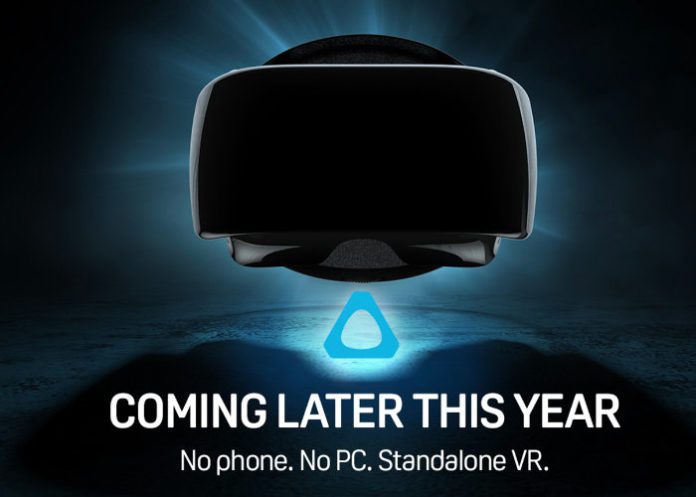It was announced at Google’s 2017 I/O Conference that they’ve partnered up with HTC and Lenovo for their next round of virtual reality innovations. There are also other standalone VR headsets being developed by Oculus Rift. What does this mean for virtual reality and fitness? Let’s discuss it.
VR Gear
The HTC Vive Focus and the Lenovo + Daydream wireless VR headsets won’t be weighed down by a computer or a cellphone. Instead, they’ll come with Google Daydream’s platform and will be equipped with an internal tracking and positional system called “WorldSense”. Gone are the days of having to make sure you don’t kick or run into your computer while sword fighting dragons or dancing up a storm.
These systems have evolved away from the limitations of a tethered design and getting rid of external sensor kits to track a user’s head and body motions. Instead, HTC’s Focus and Lenovo’s headset will come with internal tracking sensors and a touch-enabled controller to help you get the best tracking and control possible.
When it comes to exercise and fitness, retiring the 4DOF and making way for a 6DOF controller is of notable importance. The six-degrees of freedom allows you to move up, down, left, right, as well as forward and backward in a space so the gear can keep up with you, not the other way around.
Cord-Free Benefits
Having a cord-free virtual reality headset means that you aren’t limited to your living room or workout space anymore. The walls are pretty much gone, with exception of the clear and obvious boundaries meant to keep you from walking into dangerous situations.
Literally, you could travel to another place away from home, put the headset on, and then transport yourself to another virtual space. Cool, right? The potential for fluid travel throughout everyday spaces is what makes this product’s potential truly limitless.
Exercise Unlimited
People who are wheelchair bound, in physical therapy, or who need or want to sit and exercise will benefit from getting a workout while using these cordless VR headsets. While those that want to stand and move around can also do so unhindered. Because the headset isn’t heavy or restricting, you won’t be straining to keep your body and neck, shoulders, and head in one position like old tethered headsets used to require. You’re free to move in a space freely as you sit, stand, crouch, and jump while using a handheld controller to manipulate objects and move freely inside a 3-dimensional world.

Warm Up, Exercise, and Cool Off
You can practice yoga, stretch, and warm up using virtual games and programs to begin your workout. Get your cardio and strength training accomplished by turning up the intensity as you play action and adventure games that will get your heart pumping, your adrenaline targeted all while defeating bad guys, becoming a hero, gaining points, or by competing with others. Cool down as you use the headset to target your breathing as you stretch and relax around awe-inspiring 360-degree landscapes.
Feeling Connected
The wireless design is a much-anticipated improvement that will improve the immersion and believability of virtual environments. Being free to move, jump, and doing so quickly is a major upgrade to improving VR workouts and exercises. Google, HTC, and Lenovo got it right when they joined forces to develop the tetherless VR headset.
Having wires connected to the back of your head can be distracting and can limit you to a swivel chair or confine you to a room, leaving you tripping over wires and disconnected from your experience. Getting those pesky wires out of the way gives the user a lifelike and immersive VR experience. Feeling disconnected while wearing VR gear is so 2016, feeling more connected to your body and your workout is in the future, in fact, it’s on the horizon.

Release Date Rumors
Oculus Rift is rumored to have a standalone system named Santa Cruz, with a partnership that’s been named Pacific (both codenames and little is known) in the works. It’s assumed that it will be released within the next year or so. Other indicators that help weigh those rumors as truthful are recent price reduction and industry whispers about development announcements in the Fall. These rumored announcements are coincidently positioned to take place around the same time the Oculus Connect 4 meeting will be held in San Jose, California. Coincidence? Probably not.
Lenovo, however, is expected to be unveiled in the Winter and HTC Vive Focus is projected to be released at the end of 2017 or as late as 2018, respectively. Hopefully, Lenovo and HTC will be able to disclose more about the standalone headset compatibility with gaming and app platforms like Steam VR, and other workout equipment in order to fully see the spectrum of virtual experiences that we can all benefit from.


